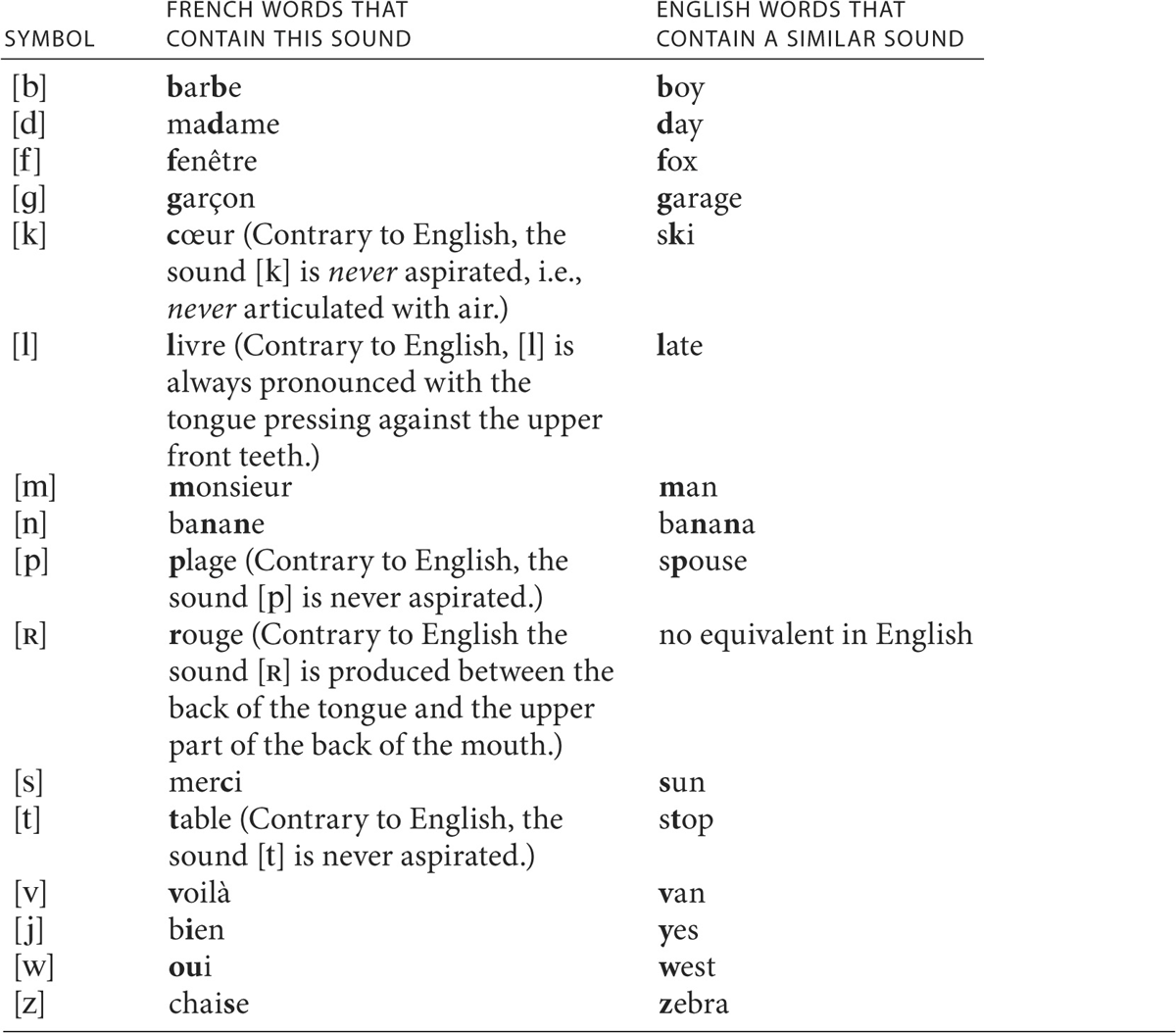 m]. Note that silent letters (m, p, s in the first example, h and e in the second example) do not appear in phonetic transcriptions.
m]. Note that silent letters (m, p, s in the first example, h and e in the second example) do not appear in phonetic transcriptions.Beginning students of French usually have no difficulty writing the words they have learned but find it hard to pronounce them. In French, numerous letters are silent, and some represent sounds that do not exist in English. Depending on its environment within the word, one letter may have several different pronunciations, and one sound may have several different spellings. Although French uses the same alphabet as English, the rules of English pronunciation do not apply. The sounds that the letters of the alphabet produce in French are frequently quite different from those they produce in English.
To indicate how a letter or combination of letters is pronounced, the symbols of the International Phonetic Alphabet are often used, i.e., the letters are transcribed phonetically. Phonetic transcriptions are always placed in square brackets. The word temps, for example, is transcribed [tã], the word homme [ m]. Note that silent letters (m, p, s in the first example, h and e in the second example) do not appear in phonetic transcriptions.
m]. Note that silent letters (m, p, s in the first example, h and e in the second example) do not appear in phonetic transcriptions.
There are thirty-six phonetic symbols that represent the thirty-six sounds of the French language. If you learn these extremely useful symbols, and if you know which sounds they describe, you will be able to understand the transcriptions given in this book and look up the pronunciation of French words in many dictionaries.
Most of the symbols representing the consonants and half-consonants (or semivowels) are derived from the Latin alphabet that we use to write French and English.

The following phonetic symbols are not taken from the Latin alphabet:

Note that French vowel sounds are much tenser than the English ones.

Note that these vowels are transcribed with a tilde [~] above them and that the sounds they represent resonate in the nose.

The following abbreviations are used in this book: